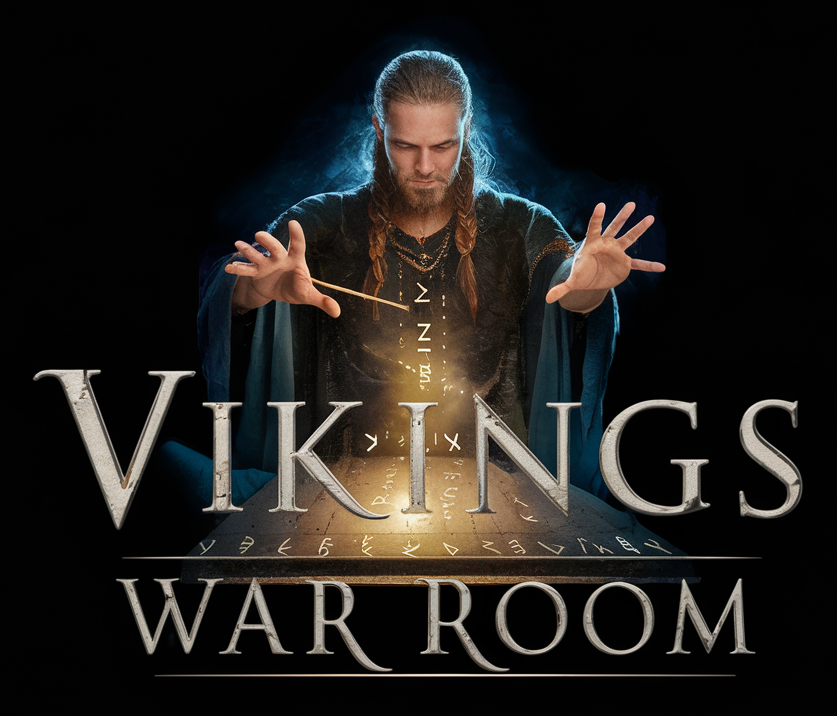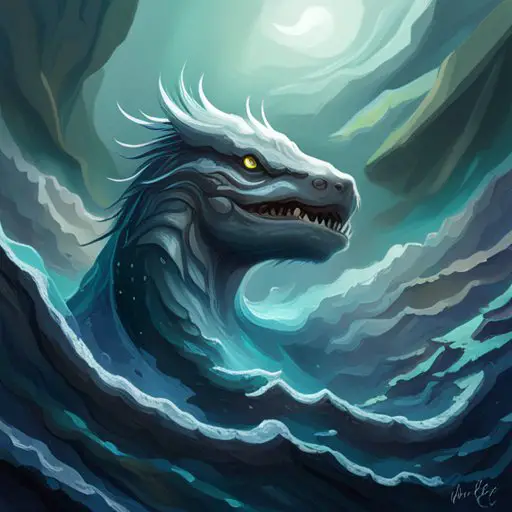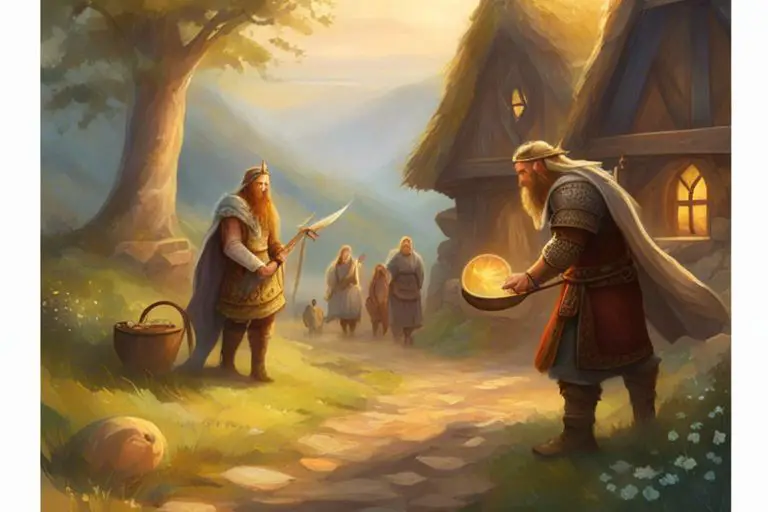I have always been fascinated by mythological creatures and the stories that surround them. One such creature that has always piqued my interest is Jörmungandr, the World Serpent of Norse mythology.
While some may dismiss it as just another mythical beast, I have delved deeper into the origins of this creature and the symbolism surrounding it, and I have found that Jörmungandr has a rich and complex history that is worth exploring.
There are many theories about the origins of Jörmungandr, but one that particularly caught my attention is the idea that it represents the forces of chaos and destruction that are inherent in the natural world.
This theory suggests that Jörmungandr was created during the primordial chaos that existed before the world was formed, and that it embodies the natural forces that can cause destruction and upheaval in the world.
While this may seem like a frightening concept, I believe that understanding the symbolism and mythology surrounding Jörmungandr can help us to better understand our place in the world and our relationship to the natural forces that shape it.
The Origins of Jörmungandr
Let’s dive into the fascinating story of how Jörmungandr, the world serpent, came to be. According to Norse mythology, Jörmungandr was one of the three children of Loki, the trickster god, and the giantess Angrboða. However, unlike his siblings, Hel and Fenrir, Jörmungandr was not humanoid in form, but rather a massive serpent that was said to be so long that it could encircle the entire world.
The story goes that Odin, the leader of the Norse gods, threw Jörmungandr into the ocean after realizing the serpents’ destructive potential. There, Jörmungandr grew and grew until he became the massive creature that we know today.
But Jörmungandr’s story doesn’t end there. In fact, his role in Norse mythology is one of the most fascinating and complex of any creature in the pantheon. Let’s explore the symbolism and mythology surrounding the world serpent and discover what makes him such an intriguing figure.
Symbolism and Mythology Surrounding the World Serpent
Oh, so you think the symbolism and mythology surrounding this giant sea creature are just a bunch of meaningless stories? Well, let me tell you, there’s more to it than just a scary bedtime tale. Jörmungandr, also known as the World Serpent, isn’t just a creature that threatens to destroy the world during Ragnarok. It’s a symbol of chaos, power, and transformation, and its mythology holds a deeper meaning that reflects the worldview of the ancient Norse people.
In Norse mythology, the sea is often associated with chaos and unpredictability. Jörmungandr, as a serpent that encircles the world, embodies this aspect of the ocean. Its presence creates a sense of unease and danger, reminding the people of the forces of nature they can’t control. At the same time, the serpent’s size and power also inspire awe and respect, reminding the people of the potential for growth and transformation that lies within chaos.
The World Serpent is also associated with the concept of cycles and renewal. Its role in Ragnarok, where it battles against Thor and ultimately dies, isn’t just a sign of destruction but also of rebirth. Jörmungandr’s death marks the end of an era and the beginning of a new one, where the world can be reborn and renewed. This symbolism reflects the Norse belief in the cyclical nature of life and the importance of embracing change and transformation.
Additionally, Jörmungandr’s presence in Norse mythology highlights the interconnectedness of all things. As a creature that encircles the world, it’s a reminder that everything is connected and that actions have consequences that ripple throughout existence. This idea is reflected in the web of fate that the Norns weave, which connects all living beings and determines their destiny.
Finally, the World Serpent is a symbol of power and strength. Despite its destructive potential, it’s also a creature that commands respect and admiration. Its size and might remind the people of the importance of standing up for oneself and asserting one’s own power. At the same time, the serpent’s death in Ragnarok also serves as a reminder of the limits of power and the need for humility in the face of the forces of nature.
As we delve deeper into the mythology surrounding Jörmungandr, we begin to understand the complex role that this creature played in Norse cosmology. Its symbolism reflects the worldview of the ancient Norse people and offers a glimpse into their beliefs about the nature of existence. But what was Jörmungandr’s actual role in the Norse pantheon?
Let’s take a closer look.
Jörmungandr’s Role in Norse Cosmology
Now you’ll learn about the important role this sea creature played in the Norse cosmology and how it represented the interconnectedness of all things.
Jörmungandr, also known as the World Serpent, was one of the three children of Loki, the trickster god, and the giantess Angrboda. According to the Norse mythology, Odin, the king of the gods, threw Jörmungandr into the sea after its birth because he foresaw that the serpent would grow so large that it could encircle the earth and threaten the very existence of the gods.
As such, Jörmungandr became a symbol of the cyclical nature of life, death, and rebirth, and of the inherent interconnectedness of all things in the cosmos. In the Norse cosmology, Jörmungandr also represented the element of water and the primordial chaos that existed before the creation of the world.
The serpent was said to reside in the ocean that surrounded Midgard, the realm of humans, and was so large that it could bite its own tail. This image of the serpent as an infinite circle or ouroboros represented the cosmic balance between order and chaos, life and death, creation and destruction.
It was believed that when Jörmungandr releases its tail, it will signal the beginning of Ragnarok, the end of the world and the final battle between the gods and the giants.

Depictions of Jörmungandr in Art and Literature
You’ll love seeing how artists and writers throughout history have portrayed this epic creature in their works, from intricate carvings on Viking ships to vivid descriptions in classic literature. Jörmungandr’s massive size and fearsome appearance have made him a popular subject in art and literature, inspiring countless depictions of the world serpent over the centuries.
Here are just a few examples of how Jörmungandr has been represented in different works of art and literature:
– In some ancient Viking carvings, Jörmungandr is depicted as a serpent with a body so long it wraps around the entire ship.
– The 13th-century Icelandic text, the Prose Edda, describes Jörmungandr as a ‘great monster, whose coils encircle the earth,’ with ‘gleaming eyes’ and ‘large fangs.’
– In the 19th-century poem ‘The Serpent,’ by Norwegian poet Henrik Ibsen, Jörmungandr is portrayed as a symbol of the destructive forces of nature.
– In the popular Marvel Comics universe, Jörmungandr is a recurring villain in the Thor series, depicted as a massive serpent capable of destroying entire cities with a single strike of his tail.
As you can see, Jörmungandr has been a popular subject in art and literature for centuries, inspiring countless depictions of the world serpent in various forms. But Jörmungandr’s legacy goes beyond just these creative works – he has also left his mark on modern culture in some surprising ways.
The Legacy of Jörmungandr in Modern Culture
As you delve into modern popular culture, you’ll discover that Jörmungandr’s influence can be felt in everything from video games to movies, as his legend continues to captivate audiences around the globe.
Many video games, particularly those with a fantasy or mythology theme, have featured Jörmungandr as a boss or enemy, such as in the popular game God of War.
In movies, Jörmungandr’s influence can be seen in Marvel’s Thor franchise, where he is portrayed as a giant sea serpent and an adversary of the God of Thunder.
Jörmungandr’s influence can also be felt in other areas of popular culture, such as music and fashion.
Heavy metal bands often draw inspiration from Norse mythology, and Jörmungandr is a popular subject for their lyrics and album art.
In fashion, Jörmungandr’s image can be found on t-shirts, hoodies, and other clothing items, making him a popular choice among fans of the mythology genre.
It’s clear that Jörmungandr’s legacy has continued to thrive in modern culture, proving that his legend is truly timeless.
Frequently Asked Questions
What is the scientific explanation behind the existence of Jörmungandr?
As a curious person, I’ve wondered about the scientific explanation behind the existence of mythical creatures.
After researching and reading various theories, I’ve come to the conclusion that there is no scientific evidence to support the existence of creatures like dragons, unicorns, or even Jörmungandr, the World Serpent of Norse lore.
As fascinating as myths and legends are, they’re simply products of human imagination, created to explain the mysteries of the world and provide a sense of belonging to a community.
While science can explain many things, it can’t always provide answers to the intangible aspects of human nature and culture.
Is Jörmungandr worshiped or revered in any modern religions?
I was curious to know if Jörmungandr, the World Serpent, is worshiped or revered in any modern religions.
After some research, I found that there is no evidence of any modern religion that worships or reveres Jörmungandr.
While some people may recognize Jörmungandr as a significant figure in Norse mythology, it isn’t a central figure in any current religion.
However, this doesn’t diminish the significance of Jörmungandr in Norse mythology and the impact it has had on popular culture.
Are there any known real-life sightings or encounters with Jörmungandr?
I’ve always been fascinated by tales of mythical creatures, and one that has always intrigued me is the World Serpent from Norse mythology.
I’ve heard stories of this massive serpent that was said to encircle the entire world, and I can’t help but wonder if there have been any real-life sightings or encounters with it.
It’s hard to imagine something so massive and powerful existing in our world, but part of me wants to believe that there’s some truth to these ancient tales.
As far as I know, there haven’t been any confirmed sightings of Jörmungandr, but the mystery and mythology surrounding it continue to captivate people to this day.
What is the significance of Jörmungandr’s name and how does it relate to its role in Norse mythology?
The name Jörmungandr is significant in Norse mythology because it literally means ‘huge monster who encircles the earth.’
This name perfectly illustrates the role this mythical creature plays in the stories of the gods.
Jörmungandr is the son of Loki and a giantess, and he is prophesized to bring about the end of the world by rising up from the depths of the sea and fighting the god Thor.
But despite his destructive potential, Jörmungandr is also seen as a symbol of balance and order, as he keeps the world in its proper place by circling it endlessly.
So, while Jörmungandr may be a terrifying creature, his name and his role in Norse mythology highlight the importance of balance and the interconnectedness of all things.
Are there any variations or different interpretations of Jörmungandr’s story in other cultures or mythologies?
I’ve always been fascinated by mythology and the different interpretations of stories across cultures. So, when I stumbled upon the story of Jörmungandr, the World Serpent in Norse mythology, I couldn’t help but wonder if there were any variations in other cultures or mythologies.
After some research, I found that there are similar stories of giant serpents or dragons in various cultures, such as the Chinese dragon and the Aztec serpent god Quetzalcoatl. However, the specifics of their stories and symbolism vary greatly.
It’s interesting to see how different cultures have their own unique interpretations of these mythical creatures.
Conclusion
Overall, learning about Jörmungandr has been a fascinating experience. As someone who’s always been drawn to mythology and folklore, uncovering the stories and symbolism surrounding the world serpent has been a true delight.
It’s amazing to think about how much meaning and significance can be packed into one mythical creature, and how it’s been able to endure and captivate people for centuries. In a way, Jörmungandr is like a puzzle piece in the larger picture of Norse mythology.
Without it, something important would be missing, and the stories and legends wouldn’t be complete. It’s like the missing piece of a jigsaw puzzle, or the last piece of a complex machine.
Jörmungandr is a reminder of how much we can learn from the past, and how many hidden treasures can be found in the stories and legends of old.





